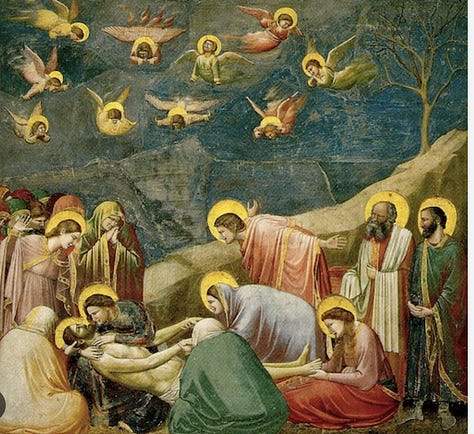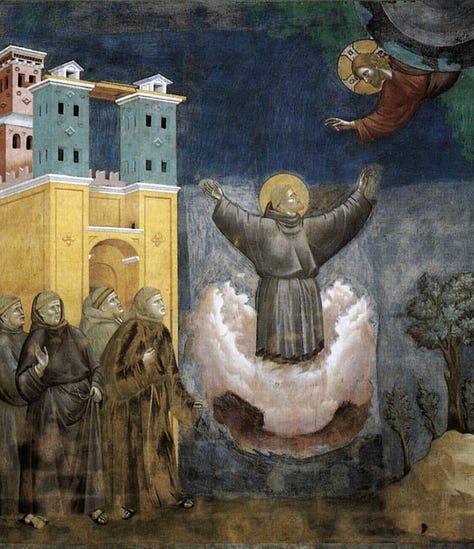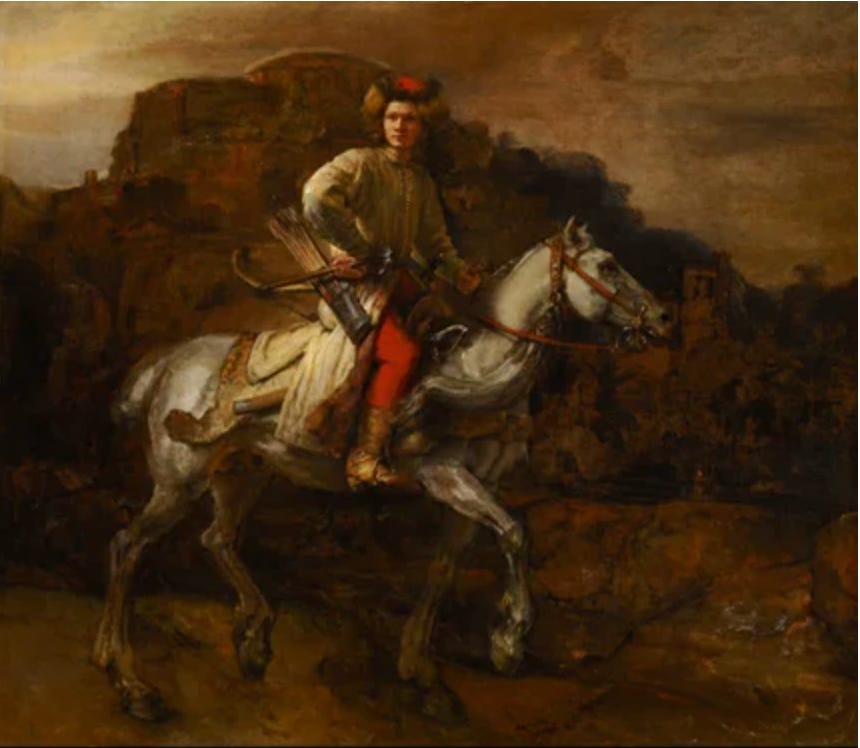I’ve been out of it with Covid, ( for the third time) but thanks to Paxlovid my symptoms improved after four days of bed-bound misery. But WHAM, after completing my prescription, the ‘rebound’ effect zapped me with vertigo and heart palpitations that sent me flying to the ER in an ambulance. ( false alarm) I probably caught the virus on a flight from SF to Newport Beach when I rode on a small and aging SkyWest jet acquired by Alaska Air that I doubt had air sanitizers. The ER nurse told me this new variant, although weaker, is highly contagious, more so than others. Moral of the story?
Get your booster and wear a mask when flying! Please do.
I’m on the mend now. So fear not.
However, while still lying in bed like a slug, today I received my weekly dose of inspiration from Google’s Art and Culture newsletter. Using this link you can click to view details from “12 Artworks you’ll love to Zoom Into”.
Since I still don’t have energy to do much else, I began to reflect on the fact that nothing can compare to peering closely at details in a “real” artwork in a museum, rather than viewing it as an art-book reproduction or viewing it virtually while zooming into it with Google.
I remember one of my earliest visits to the Frick Museum in New York while working for the color-field artist Kenneth Noland as he prepared for his 1976 retrospective at the Guggenheim Museum. I was young and impressionable, and viewing Rembrandt’s “Polish Rider” for the first time. The gallery guard didn’t stop me as I leaned in, my nose barely six inches from the canvas, as I examined Rembrandt’s artful and expressionistic brush strokes. I still remember the smell of fresh wax wafting up from the gallery’s parquet floor as I observed how parts of the painting, possibly unfinished, were sketchier than others. I was probably wearing huarache sandals along with my favorite Mexican wedding shirt while wearing my hair in two braids, a la Frida Kahlo.
The renowned art critic Clem Greenberg often visited Ken in his Shaftsbury, Vermont dwelling and studio and the two discussed how color field artists like Morris Louis and Helen Frankenthaler had substituted oil and varnish for acrylic paint, reducing space to an abstract flat plane, where layered oil glazes were replaced with with an acrylic “wash”, where “paint is thinned with a solvent to create a lighter, more transparent layer that soaks into the canvas. Glazing involves layering thin, translucent washes over dried paint layers, creating depth and luminosity by allowing underlying colors to shine through. "(Wikipedia)
Incidentally, Jackson Pollock’s drips, flicks and paint pourings of flowable alkyd paints created painting “Number 5, 1948” which sold for an incredible $140 million in May 2006!
My colleague Lisa Chase, and myself helped Ken in his studio, where he often spoke about his latest obsession, Delacroix, and how the artist used color in his artful varnished glazes. ( In fact, Ken gave me a paperback version of Delacroix’s diaries)
These uncompleted portions of the Rembrandt’s Polish Prince revealed to me how this Dutch master had applied layers of shimmering glazes over a canvas ground or imprimatura “usually done in a warm yellow-brown color, which is mixed of lead white, chalk, and a bit of umber”, (Old Masters Academy). Like some of Delacroix’s glazes, these varnished layers in The Polish Rider created a jewel-like luminosity. I marveled as this magic wasn’t visible in art book reproductions I had viewed.
It certainly was not the experience I had from looking at an art book reproduction or Google’s “Zoom” lens details of famous paintings.
On another occasion, even better, I was able to examine Rembrandt etchings first-hand, while wearing white cotton gloves at the Clark Institute in Williamstown, Massachusetts . Lucky for me, Dr. Frank Richardson, a curator at Williamstown’s Clark Institute, had been visiting Ken one day and was speaking about his museum’s doctoral class, “ Problems of Connoisseurship in Dutch Master Etchings.” I asked him if I could audit the class and he complied.
Shortly after, on Wednesday afternoons, I became one of the privileged few who could handle original etchings by Rembrandt while wearing white cotton gloves. Seated at a table with eight doctoral candidates, we passed original Rembrandt etchings to each other hand to hand. I can still recall my heartbeat quickening as I held in my hands the first and only state of the famous Rembrandt etching, “The Trees”.
I listened raptly as the curator, Dr. Frank Robinson, pointed out how Rembrandt may have etched The Three Trees on a plate that contained an abandoned sketch for The Death of the Virgin. I also learned how deftly Rembrandt had used drypoint, engraving to create varied depths of etched lines.
A few months earlier, I had backpacked my way through Europe, headed for Assisi, Italy, to view Giotto’s cycle of 28 frescoes depicting the life of St. Francis painted on the walls below the windows of the upper church of the Basilica of St. Francis of Assisi.
My ceramics teacher at Bennington College, Stanley Rosen, often spoke of Giotto. Stanley was said to have been the model for the protagonist in the short story, “Rembrandt’s Hat” by Bernard Malamud. Stanley’s advice was usually cryptic but to the point. He wore a baker’s hat and one of his students recalls that “ When a towering hand-built piece collapsed under the drying sunlamps in the pottery studio, Stanley Rosen chewed on his pipe, smiled, and said, “Start over again. Don’t be precious about what you create.”
Stanley was my hero even though he once called my ceramic work “platitudinous”.
( After looking up the word’s meaning in the dictionary, I had to agree. I had little talent for the art of clay and dropped it as a major. )
Nevertheless, on a hot and steamy July day in Assisis, I found myself standing in the musty interior of the Basilica of St. Francis, my feet planted in front of Giotto’s vivid creations. Sweat dripped down my face as I craned my head up and down to view the frescoes made of of lime and pigment plastered on the church walls. I was speechless as I viewed the work of this early artist whose vision changed everything done before. I bought a pack of reproductions at the Basilica doorway that I still have today.








The Google Zoom Art virtual app can’t replace moments such as these.
But for today’s generation maybe the Google Zoom app may prove “as good as it gets”
in an era where “Art” has been relegated to the realm of entertainment and Manga graphic novels.
I hope not.








